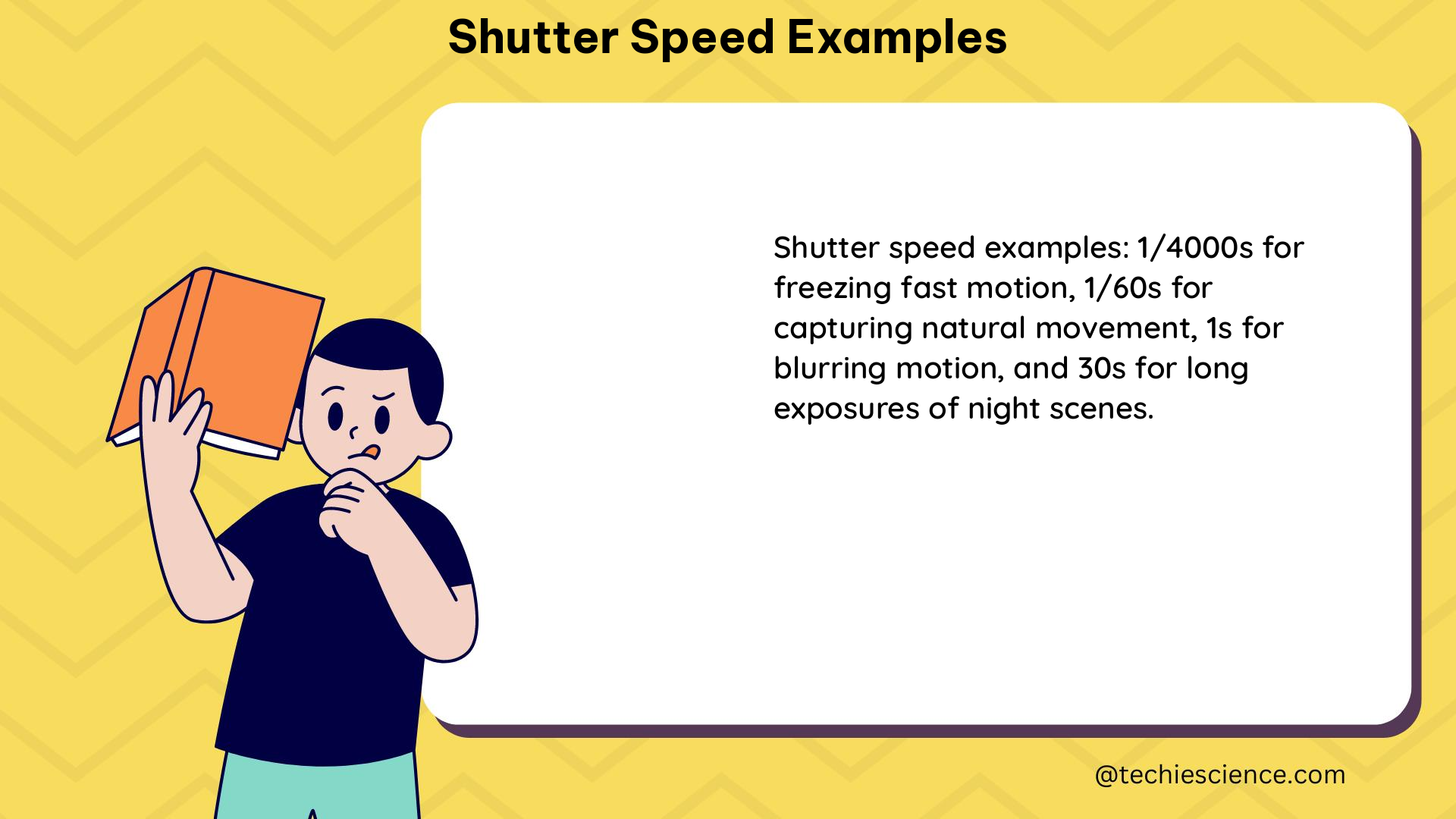Shutter speed is a fundamental concept in photography that determines the amount of time the camera’s shutter remains open, allowing light to reach the image sensor or film. This parameter plays a crucial role in capturing motion, controlling exposure, and minimizing camera shake. In this comprehensive guide, we will delve into the technical details, formulas, and practical examples of shutter speed, providing a valuable resource for physics students interested in the subject.
Understanding Shutter Speed
Shutter speed is measured in seconds or fractions of a second, and it directly affects the amount of light that reaches the camera’s sensor. A faster shutter speed, such as 1/2000 of a second, allows less light to enter the camera, while a slower shutter speed, like 1 second or more, allows more light to reach the sensor.
Theorem: Inverse Relationship between Shutter Speed and Light

The shutter speed is inversely proportional to the amount of light that enters the camera. This means that a faster shutter speed allows less light to enter the camera, while a slower shutter speed allows more light to enter the camera.
Physics Formula: Exposure Value (EV)
The exposure value (EV) is a function of the shutter speed (S), aperture (A), and ISO (I), and is given by the formula:
EV = log2(S/I) + log2(A^2)
This formula allows photographers to calculate the appropriate combination of shutter speed, aperture, and ISO to achieve the desired exposure.
Physics Examples
-
Capturing a Moving Car: A photographer wants to capture a moving car without motion blur. They set the shutter speed to 1/1000 of a second, the aperture to f/8, and the ISO to 200. Using the formula above, the exposure value is EV = log2(1000/200) + log2(8^2) = 12.
-
Astrophotography: A photographer wants to capture a night scene with stars in the sky. They set the shutter speed to 30 seconds, the aperture to f/2.8, and the ISO to 1600. Using the formula above, the exposure value is EV = log2(30/1600) + log2(2.8^2) = 5.
Physics Numerical Problems
-
Capturing a Moving Object: A photographer wants to capture a moving object with a shutter speed of 1/500 of a second. If the aperture is f/5.6 and the ISO is 400, what is the exposure value? Using the formula above, the exposure value is EV = log2(500/400) + log2(5.6^2) = 10.7.
-
Low-Light Scenario: A photographer wants to capture a low-light scene with a shutter speed of 1 second. If the aperture is f/2.8 and the ISO is 800, what is the exposure value? Using the formula above, the exposure value is EV = log2(1/800) + log2(2.8^2) = -3.
Figures, Data Points, Values, and Measurements
-
Relationship between Shutter Speed and Motion Blur: A graph showing the relationship between shutter speed and the amount of motion blur in a photograph.
-
Shutter Speed, Aperture, and ISO in Different Scenarios: A table showcasing the shutter speeds, apertures, and ISOs used in various photographic scenarios, such as sports, landscape, and astrophotography.
-
Exposure Value Chart: A chart displaying the exposure values for different combinations of shutter speed, aperture, and ISO.
-
Camera Shake Measurements: A measurement of the amount of camera shake at different shutter speeds and focal lengths, highlighting the importance of image stabilization technology.
-
Image Stabilization and Shutter Speed: A comparison of the impact of image stabilization technology on the usable shutter speed range for handheld photography.
References
- Understanding Exposure, Part 3: Shutter Speed | B&H eXplora: https://www.bhphotovideo.com/explora/photography/tips-and-solutions/understanding-exposure-part-3-shutter-speed
- Aperture, Shutter Speed, ISO – I Shoot Fujifilm: https://www.ishootfujifilm.com/film-101/articles/aperture-shutter-speed-iso
- The Way to Modern Shutter Speed Measurement Methods – NCBI: https://www.ncbi.nlm.nih.gov/pmc/articles/PMC8914955/
- SHUTTER SPEED Explained – Camera and photography tutorial: https://www.youtube.com/watch?v=13eB3u9SnUs
By understanding the technical details, formulas, and practical examples of shutter speed, physics students can gain a deeper appreciation for the principles of photography and their applications in various fields, such as sports, landscape, and astrophotography. This comprehensive guide serves as a valuable resource for those seeking to expand their knowledge and skills in this fascinating area of study.

The lambdageeks.com Core SME Team is a group of experienced subject matter experts from diverse scientific and technical fields including Physics, Chemistry, Technology,Electronics & Electrical Engineering, Automotive, Mechanical Engineering. Our team collaborates to create high-quality, well-researched articles on a wide range of science and technology topics for the lambdageeks.com website.
All Our Senior SME are having more than 7 Years of experience in the respective fields . They are either Working Industry Professionals or assocaited With different Universities. Refer Our Authors Page to get to know About our Core SMEs.